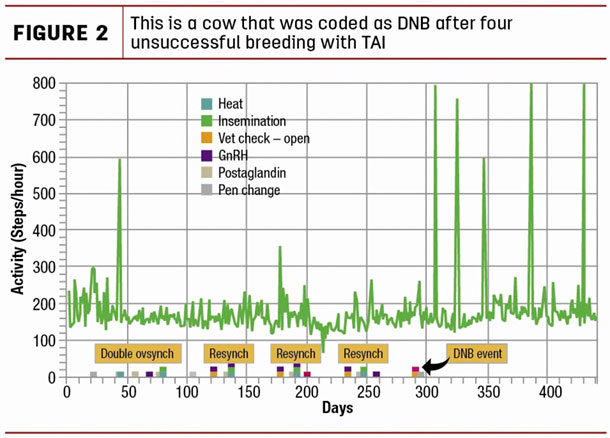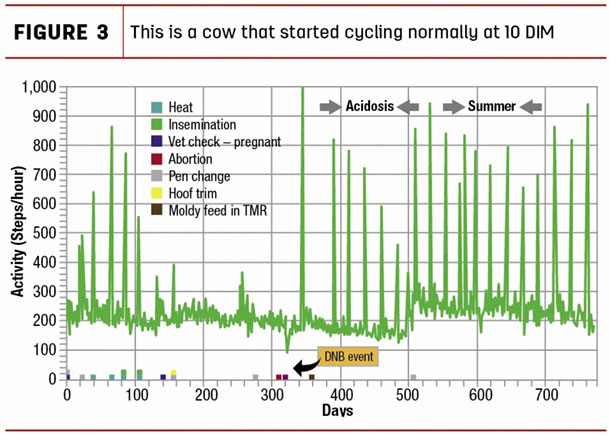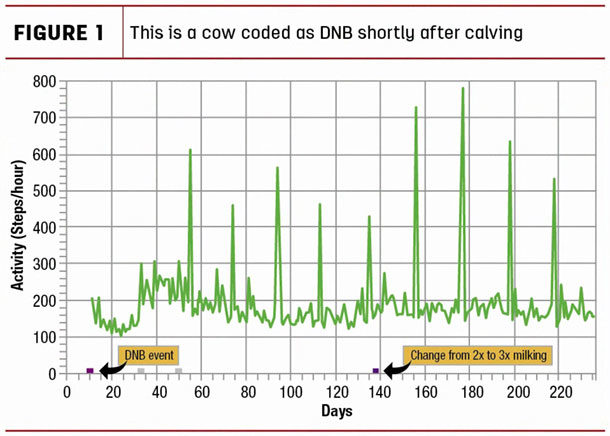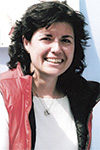Most farmers and veterinarians see do not breed (DNB) cows at the end of their reproductive utility. It is true they will not produce any more calves and their life expectancy will be limited by how long they can maintain production. However, they can still help with the reproductive health of the rest of the cows, working as herd sentinels.
DNB cows are unique in the herd because nobody interferes with their reproductive system, making them good natural detectors of herd-level problems that interfere with healthy cyclicity like the proverbial “canaries in the mine.” By monitoring their natural heats, we can see whether they are cycling regularly and if they are good-quality heats.
The reproductive herd can be categorized in three groups: fresh cows, breeding cows and pregnant cows. Pregnant cows have already reached the necessary status to continue producing for another lactation, and the pregnancy itself will prevent expression of estrus. Therefore, these cows cannot really help diagnose potential problems in other cows.
Fresh cows (before the voluntary waiting period) are exposed to inherent risk factors during the transition period that negatively impact reproduction. Therefore, it is very difficult to separate the effect on reproduction of problems inherent to the transition period, such as metritis and ketosis, from other more generalized problems such as water, feed or environmental risks that affect the entire herd.
Breeding cows are in a race against the clock to get pregnant as soon as possible. These cows typically have been bred recently, and nobody wants to interfere with that recent insemination to maximize the potential for a pregnancy.
This only leaves DNB cows to identify problems that interfere with normal cyclicity in the herd. This has become easier with the availability of activity monitoring systems. Some activity systems are used only on breeding cows until they become pregnant and then moved to another breeding cow to maximize return on investment (ROI) of the activity tag. In farms where the activity system is also used as an RFID to identify cows in the parlor to monitor milk production, DNB cows retain their activity tag until they leave the herd, and we get to use their activity data to monitor the rest of the herd.
When multiple DNB cows are showing similar disturbances to their activity patterns, it is time to identify the reason because these risk factors are also negatively affecting the actively breeding herd and the fresh cows that will be bred soon.
Figures 1 through 3 show the activity of three different DNB cows. The spikes in activity can be either heats, hoof trimmer visits or pen changes (which are marked at the bottom with colors). When looking at activity in cows, we need to pay attention to two separate things:


- The height of the spike in activity indicates the quality of the heat (the higher, the better).
- The distance between spikes in activity indicates the regularity of the cycles.
Looking at the height of the spikes, we can see different periods in the three figures in which the activity spikes are either non-existing (anestrus) or lower than the others (stress – heat, cold, acidosis, etc.). Looking at the distance between spikes, we can see some intervals being irregularly long (anestrus) or irregularly short (cystic). A detailed explanation for each cow is provided under each figure.
One word of caution is: Not all DNB cows are created equal, and this needs to be accounted for in selecting which ones qualify as herd sentinels and which ones don’t. Some DNB cows may have internal damage to the reproductive system that prevents them from cycling normally, and therefore they cannot be used to monitor cyclicity. If their previous activity pattern is cyclical, they are good candidates to perform as herd sentinels. If their activity pattern is erratic, it is better to skip them.
As always, it is important to maintain accurate event recording in the activity software, to determine whether an activity spike could be due to a known event such as a hoof trim or a pen change, so the rest of the patterns can be interpreted accordingly.
Pattern recognition is the main driver of automatic detection systems. As such, don’t rely on a single DNB cow to draw conclusions on the rest of the herd. Look at all of the DNB cows and see if there is a pattern of low or irregular activity during the last two to four weeks to quickly identify a herd problem.







